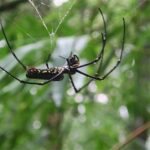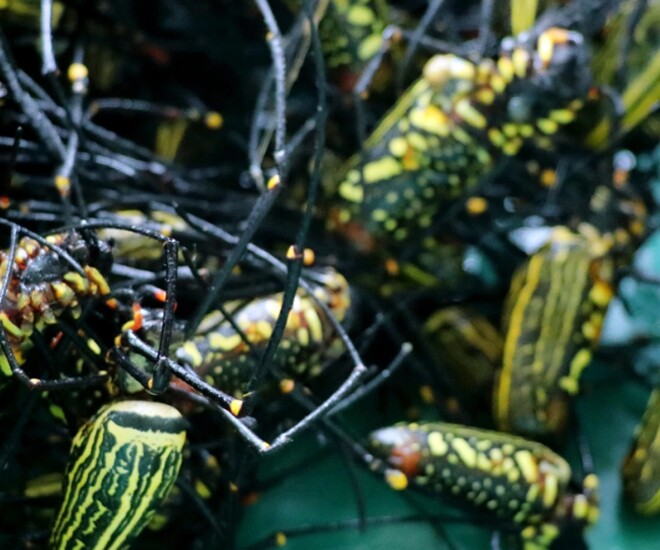
A closer look at the black and yellow-striped spider, a unique delicacy of Nghe An and Binh Thuan provinces
This spider is commonly known as the banana spider and its scientific name is Nephila pilipes. They are widespread throughout Southeast Asia and Oceania. In Vietnam, the black and yellow-striped spider is mostly found in Nghe An and Binh Thuan provinces. Its distinctive features include a glossy black body, prominent yellow stripes on its back, and a yellow spot on its abdomen. The females are larger and darker in color than the males. Unlike most other spiders, this species has only six legs instead of the typical eight.
The season for these spiders usually falls between May and August, especially after rainy spells. They spin their webs from branch to branch, at a height within arm’s reach, moving slowly and docilely, making them relatively easy to catch. Locals use a bamboo stick to gently nudge the spiders, causing them to fall. Only the adults, about the size of a thumb, are selected for consumption.
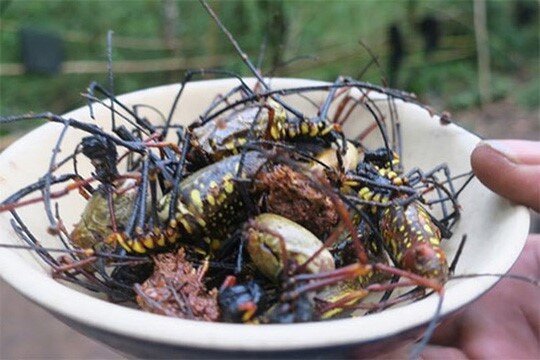
These spiders often appear after the rain and have a nutty and buttery taste, making them a beloved delicacy in Nghe An province.
According to locals, this spider used to be a “lifesaver” for people venturing into the forests. The most common way to prepare them is to skewer them on bamboo sticks and grill them over hot coals. Others prefer to fry them with salt or fish sauce to enhance their nutty flavor. When eaten, the spiders have a nutty and buttery taste, making them a unique delicacy that captivates anyone who tries them.
While they are relatively easy to catch, hunting these spiders is not without its dangers. Although the black and yellow-striped spider is not venomous, its bite can still cause swelling and a burning sensation for a few days. Moreover, navigating the treacherous forest paths to find and capture them entails risks. Nonetheless, with prices ranging from 100,000 to 250,000 VND per kilogram (depending on size), spider hunting remains a valuable source of income for highland residents during the season. Lucky days can yield several kilograms, while less fortunate ones might only result in a few hundred grams.
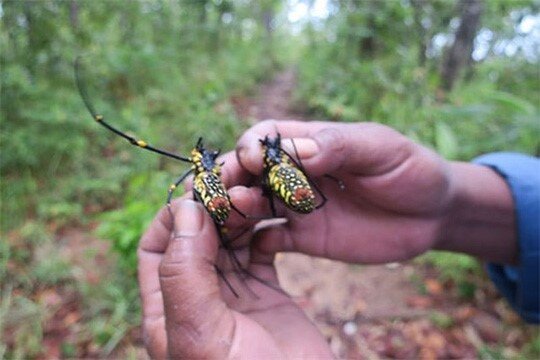
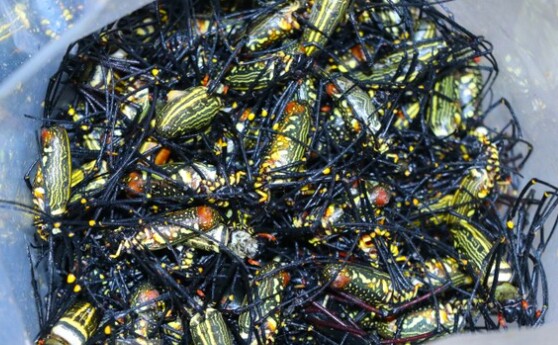
The black and yellow-striped spiders are sold at prices ranging from 100,000 to 250,000 VND per kilogram.
Despite being considered a “treasure of the mountains,” experts remain cautious. Mr. Nguyen Trong Huong, Director of the Yen Thanh District Agricultural Service Center, advises against consuming these spiders. He explains that spiders play a crucial role in the natural ecosystem by controlling pest populations. Additionally, many species in the wild possess potential toxins, and consuming unknown or untested creatures can be hazardous.
Medical experts also caution individuals with insect allergies to approach spider-based dishes with caution to prevent allergic reactions or poisoning.

























